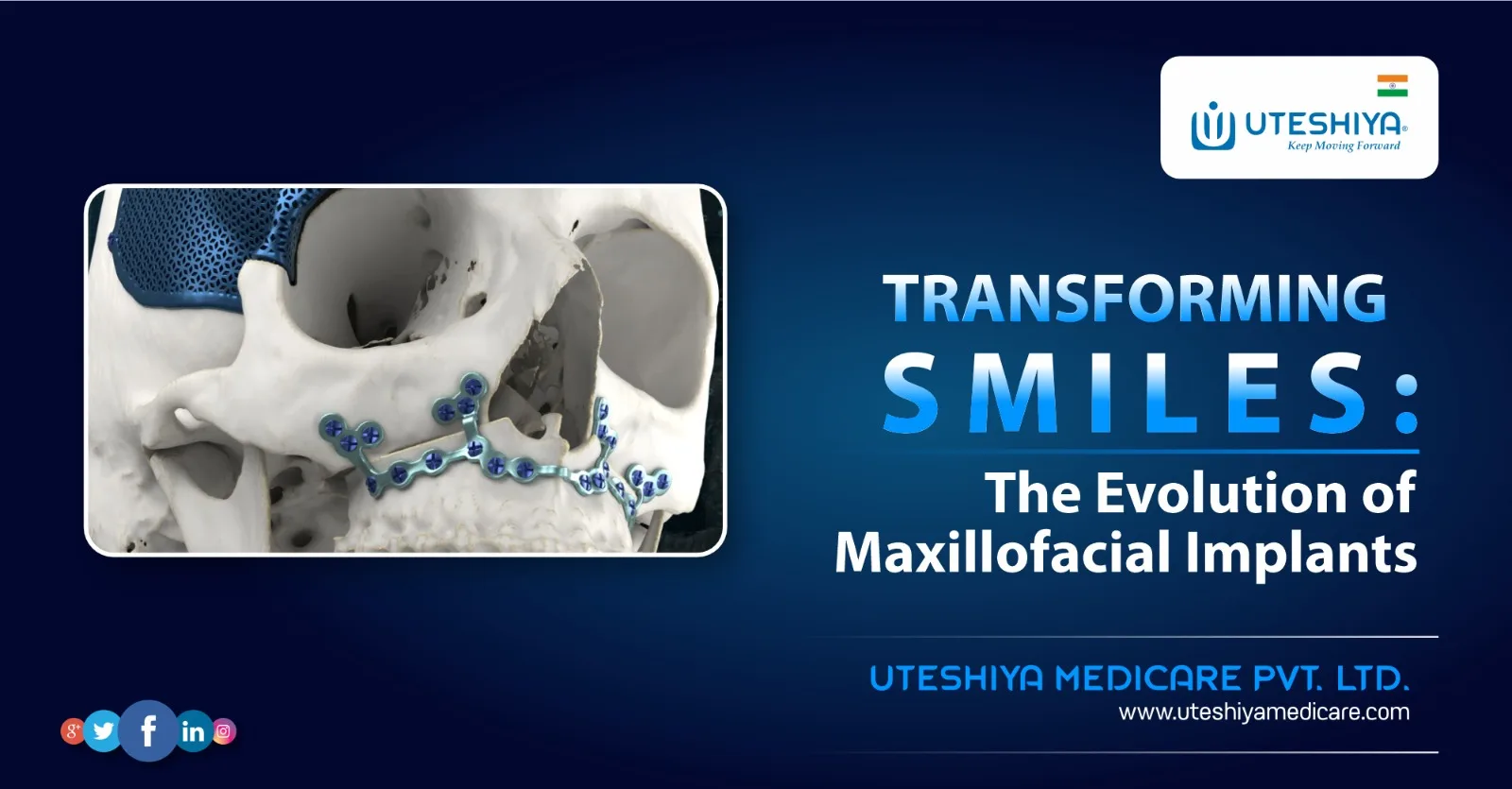
Are you ever wondering about the ways in which facial deformities that are the consequence of trauma or injury can have an effect not just on a person’s physical appearance but also on their entire well-being and confidence in themselves? In the face of such difficulties, the development of maxillofacial implants provides an aspect of hope and the opportunity for personal transformation.
Nevertheless, the path toward recovering smiles and function is not without challenges along the way. How can the techniques that are used in current dentofacial repair properly address these complicated defects and generate solutions that are long-lasting? As we look into the extraordinary breakthroughs that have been made in maxillofacial implants, we will also look into how these implants are revolutionizing the field of dentofacial correction, one smile at a time.
Importance of Maxillofacial implants
As a result of the development of titanium implants and the use of innovative surgical techniques, maxillofacial surgeons today have access to sophisticated instruments that enable them to treat even the most complex facial defects.
- The use of these maxillofacial implants, which have been painstakingly crafted and adapted to meet the specific requirements of each individual patient, not only provides stability and alignment but also holds the promise of restoring function and beauty.
- Through the utilization of the most recent advancements in materials science and technology, maxillofacial implants are paving the way for improved patient outcomes and an enhanced quality of life.
Come along with us on this journey of discovery as we uncover the transformational power of maxillofacial implants in the process of changing smiles for a more promising future and resolving complicated facial difficulties associated with them.
The Historical Background Of Maxillofacial Implants
In the past, the materials that were most widely utilized for maxillofacial implants were stainless steel and Vitallium.
Titanium implants, on the other hand, have become the material of choice as a result of their biocompatibility, durability, and capacity to integrate smoothly with bone tissues. This is due to the fact that technological and materials science breakthroughs have made titanium implants the preferred choice.
Maxillofacial implants made of titanium offer –
- Excellent mechanical qualities
- Biocompatibility
- Enabling stability
- Fixation
- Alignment for appropriate healing
This is the current state of the field of maxillofacial implants. Patients who are undergoing dentofacial corrective treatments can choose from a variety of implants, including bone plates and screws, according to their specific requirements.
Recent Advances in Maxillofacial Implants
Customization
The use of advanced manufacturing techniques allows for precise customization of implants to ensure optimal fit and function, hence lowering the amount of time required for surgical procedures and increasing patient outcomes.
Surface Modifications
Surface modifications, which include coatings and textures, stimulate osseointegration, which in turn improves faster healing and the success of implants over the long term.
Biological Enhancements
The incorporation of growth factors and stem cells into implant materials encourages tissue regeneration, which ultimately results in better bone production and integration.
Virtual Surgical Planning
Surgeons are able to imagine surgical processes and optimize implant placement because to digital technology such as 3D printing and virtual surgical planning. This leads to more predictable outcomes and increased reductions in complications.
The Experience of Patients and Their Outcomes
By addressing both functional and aesthetic concerns, maxillofacial implants have improved the quality of life for people throughout. Patients see improvements in their oral function, facial symmetry, and confidence in their looks as a result of the utilization of individualized implants and advanced surgical techniques. The use of titanium implants has resulted in a considerable reduction in postoperative complications, which has led to a reduction in recovery periods and an improvement in overall results.
Future of Maxillofacial Implants
The future of maxillofacial implants has the potential for further improvements in the fields of material science, surgical procedures, and patient outcomes. The following are the goals of ongoing research and innovation:
- In order to promote better tissue regeneration and integration, it is necessary to develop bioactive materials that accurately match the natural characteristics of bone.
- It is possible to give individualized postoperative care and monitoring by incorporating intelligent technologies into implants. Some examples of these technologies are sensors and real-time monitoring systems.
- Investigate the use of biodegradable materials for temporary implants, with the goal of decreasing long-term problems and reducing the extent to which further procedures are required.
Choose Uteshiya for Superior Maxillofacial Implants
We recommend that you select Uthesiya as your preferred partner for the manufacturing of maxillofacial implants. We are able to provide precision-engineered implants that meet the highest standards of quality and performance because of our experience, our modern facilities, and our commitment to customization and innovation. Patients who are undergoing dentofacial corrective treatments can get the best possible results by putting trust in our expertise and commitment to providing outstanding products that are individualized to meet their specific surgical requirements.
The importation of titanium implants in order to maintain the highest quality standards may be a contributing factor to pricing variances, with the average range of treatment expenses being between 1.5 and 2 lakhs.
Wrapping It Up
The evolution of maxillofacial implants, in particular those made of titanium, has brought about a transformation in the field of dentofacial correction. These implants have provided patients with facial deformities with viable answers to their problems.
It is expected that the future of maxillofacial implants will significantly improve patient outcomes and quality of life as a result of continued developments in materials, technology, and surgical techniques. Maxillofacial implants will continue to play an important part in the transformation of smiles and the restoration of confidence to individuals all over the world as the voyage of innovation continues.

